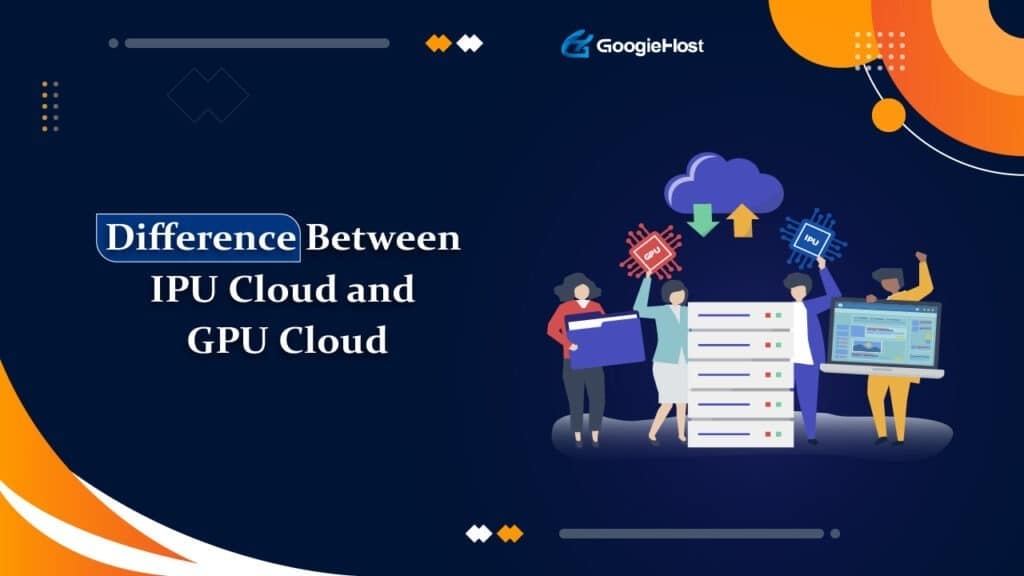The choice of technology platforms tailored to specific computational tasks can significantly impact business efficiency and innovation.
Two such technologies are the GPU (Graphics Processing Units) Cloud and IPU (Intelligence Processing Units) Cloud.
This article explores the unique features, applications, and differences between GPU Cloud and IPU Cloud, providing essential insights for businesses looking to leverage these advanced computing resources.
Understanding GPU Cloud
The GPU Cloud harnesses the power of Graphics Processing Units within a cloud environment, offering substantial parallel processing capabilities.
This section explains what GPU Cloud is and its primary applications across various industries.
What is GPU Cloud?
The GPU Cloud integrates GPUs with cloud computing environments. Initially developed for rendering graphics in video games, GPUs are adept at handling complex algorithms and performing parallel processing tasks at high speeds.
Their architecture allows them to manage thousands of threads simultaneously, making them ideal for tasks that require heavy computational power. The Gcore GPU Cloud, for example, combines Bare Metal servers and Virtual Machines, equipped with cutting-edge NVIDIA GPUs, specifically engineered for AI workloads.
Applications of GPU Cloud
GPU Clouds find widespread use in industries that demand intense graphics processing and data computation capabilities, including virtual reality, scientific research, and machine learning.
For example, they are instrumental in accelerating the rendering of high-resolution images in medical imaging and improving real-time data processing in weather modelling.
GPUs’ parallel processing capabilities also make them perfect for training complex machine learning models, significantly reducing the time it takes to analyze large datasets.
Exploring IPU Cloud
IPU Cloud is tailored specifically for optimizing artificial intelligence tasks, utilizing Intelligence Processing Units.
This section outlines the design and specific applications of IPU Cloud, highlighting its unique advantages in AI computations.
What is IPU Cloud?
IPU Cloud centers around the use of Intelligence Processing Units or IPUs. These processors are specifically engineered to optimize the execution of machine learning algorithms.
IPUs are designed to be highly efficient at handling the sparse data and non-uniform computations typical of neural networks, providing a boost in speed and efficiency for AI-related tasks compared to general-purpose GPUs.
Applications of IPU Cloud
IPU Cloud excels in artificial intelligence applications, particularly in deep learning and neural network tasks.
Its architecture enables more rapid iterations during model training, leading to quicker AI development cycles.
Companies in the field of autonomous driving, for instance, use IPU Clouds to process vast amounts of data from vehicle sensors and improve the learning rate of driving algorithms, enhancing decision-making processes in real time.
Comparing GPU Cloud and IPU Cloud
While both GPU and IPU Clouds provide robust computational power, they cater to different needs and applications.
This section compares their performances, costs, and integration capabilities, guiding businesses in choosing the appropriate technology.
Performance Differences
While both GPU and IPU Clouds offer robust solutions for complex computational tasks, they excel in different areas.
GPUs are more versatile and can handle a wide range of computing needs, making them suitable for tasks that require massive parallel processing power.
However, IPUs are tailored for specific use in AI computations, providing optimized performance for tasks involving irregular data patterns typical of machine learning workflows.
Cost Implications
Budget considerations can also influence the choice between GPU and IPU Clouds.
GPUs, being more versatile, are generally less expensive to integrate and maintain, making them a cost-effective option for a broad range of applications.
On the other hand, IPUs, though potentially more costly, offer value in their specialized capabilities that can significantly reduce processing time and energy consumption in AI-specific applications.
Ease of Integration and Scalability
Adopting either GPU or IPU Clouds depends on the existing technological infrastructure and specific business needs.
GPU Clouds are widely supported and offer greater flexibility in scaling across various applications.
This makes them a preferred choice for businesses looking for a general-purpose solution that can accommodate growth in different areas.
Conversely, IPU Clouds, while offering superior performance in specialized areas, might require more precise integration efforts, which could limit scalability but ensure unmatched efficiency where it is most needed.
Frequently Asked Questions
What exactly is the difference in architecture between GPU and IPU processors?
GPUs (Graphics Processing Units) are designed for parallel processing, capable of managing thousands of threads simultaneously.
This architecture makes them ideal for tasks requiring substantial computational power across a broad range of applications.
In contrast, IPUs (Intelligence Processing Units) are specifically built to optimize artificial intelligence tasks.
They are designed to manage the sparse and non-uniform computations that are typical of neural networks.
GPU Clouds are versatile and find applications in a wide array of industries that demand heavy graphics processing and data computation.
They are crucial in virtual reality environments, scientific research for simulations and modeling, and the entertainment industry for high-resolution graphics rendering.
IPU Clouds, on the other hand, are tailored for industries heavily invested in artificial intelligence and deep learning.
They are particularly beneficial in sectors like autonomous driving, where rapid iteration and processing of vast datasets from vehicle sensors are critical.
Which industries benefit most from GPU Clouds, and which are better served by IPU Clouds?
How do cost, performance, and integration affect the decision between adopting GPU Cloud vs. IPU Cloud?
Several factors, including performance needs, budget constraints, and integration capabilities, can influence the decision between GPU and IPU Clouds:
Performance: GPU Clouds offer broad computational capabilities suitable for a diverse set of tasks requiring parallel processing power. IPU Clouds, while not as versatile, provide specialized performance that is optimized for AI tasks, particularly where handling irregular data patterns and rapid processing are critical.
Cost Implications: Generally, GPUs are less expensive to integrate and maintain due to their versatility and broad industry support, making them a more cost-effective option for many businesses. IPUs may entail higher initial costs but offer significant savings in processing time and power consumption for AI-specific applications, which can translate to long-term cost efficiencies.
Conclusion
The decision to use GPU Cloud or IPU Cloud hinges on a business’s specific computational demands and strategic goals.
GPU Cloud offers a flexible, cost-effective solution suitable for a wide range of applications, from AI and scientific research to graphics rendering.
In contrast, IPU Cloud provides a targeted, high-efficiency platform ideal for cutting-edge AI applications, where speed and processing efficiency are paramount.
Understanding these differences is crucial for businesses to optimize their computational resources, drive innovation, and maintain competitive advantage in an increasingly digital world.







